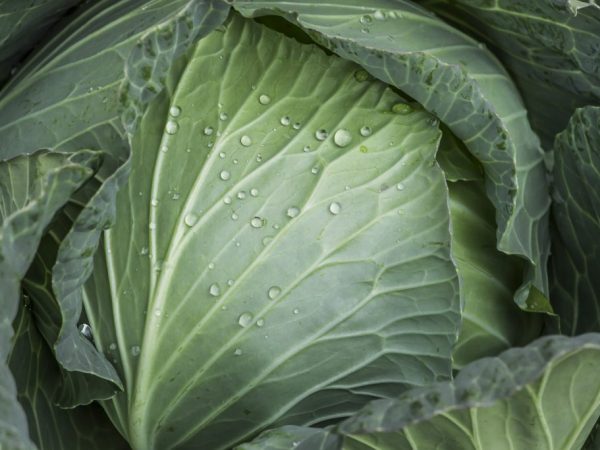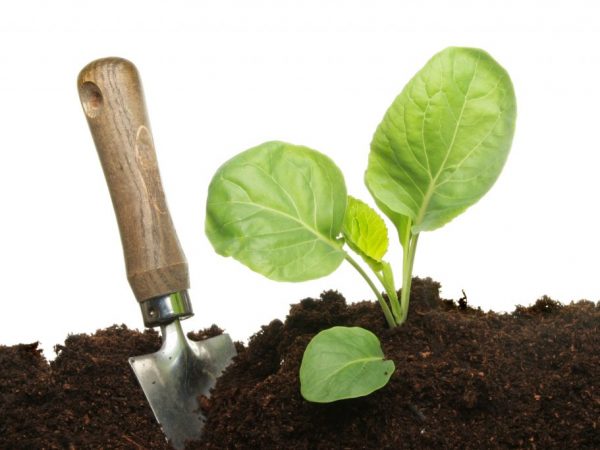Characteristics of cabbage variety Tri Bogatyr
White cabbage Three Bogatyrs is a late, high-yielding variety. Possesses excellent taste. Suitable for farming activities: tolerates mechanical cleaning, pneumatic cleaning and transportation well. We will consider a detailed description of the variety in the article.

Characteristics of cabbage variety Tri Bogatyr
Characteristics of the variety
Cabbage ripening period - late: 145 - 160 days. The guaranteed germination rate is 98%. Ripening time of seedlings is 45 - 55 days. The distance between seedlings, when planting in open ground, should be at least 60 cm. The yield from 1 m² reaches 40 kg. The shelf life is from 6 to 8 months.
Description of the head
The Tri Bogatyr variety is distinguished by its enormous size, the weight of one head of cabbage is 10-15 kg. The height of the bush is 30-50 cm.
- shape - round;
- length - up to 40 cm;
- the surface is flat, smooth;
- density - high;
- White color;
- cut color - white;
- internal stump - medium;
- the internal structure is homogeneous.
Covering leaves are gray-green with a slight waxy bloom.
Application
Cabbage of the Tri Bogatyr variety is intended for processing (pickling, pickling, canning), cooking and fresh consumption. Due to its high content of nutrients, it brings tremendous benefits to the human body. It is a dietary product.
The amount of vitamin C in cabbage is higher than in lemon. The use and use of the leaves is recommended for: diseases of the liver and joints, burns, cardiovascular and urinary system.
Care
A seedling growing method is used. Seedlings can be purchased ready for planting in open ground or grown on their own.
A few tips for growing:
- Sowing work begins in mid-March and lasts until the third decade of April;
- Before planting in the soil, the seeds are hardened and disinfected - they are immersed in hot water (50 ° C) for 20 minutes, after which they are immersed in cold water for 5 minutes;
- The soil for sowing must be nutritious and loose; for this, peat, sod land and humus are used;
- Seedlings need good lighting for at least 12 - 14 hours a day - phytolamps are used;
- Watering is carried out as needed, drying out and waterlogging of the soil must not be allowed;
- The pick takes place at the stage of cotyledons.
Temperature

Maintain optimal temperature
The optimum temperature is 15 - 18 ° C. If the sprouts begin to stretch, then the temperature must be reduced to 6-7 ° C for one week. Daytime temperature should be 15 ° C, nighttime 12 ° C. A week before planting seedlings in the garden, they must be hardened. Containers with young plants are taken out into fresh air so that they gradually get used to the surrounding climate.
The soil
Seedlings are transplanted into open ground 45 - 55 days after sowing the seeds. The ground for cabbage is prepared in the fall: organic fertilizers are applied and dug up. Vegetable crops do not like acidic soil. Fluff lime is used to lower the pH.
Before planting, 200 g of wood ash, 5 g of compound fertilizer (N, P, K) and 2 g of diazinon (chemical against soil pests) should be added to each hole. In the hole, mix everything thoroughly with the earth. Plant seedlings, deepening to a distance of the first full-fledged leaves.
Watering
After planting, the seedlings need to be watered abundantly. Further irrigation should be moderate. A good indicator of soil moisture is 70%. Watering is carried out early in the morning or in the evening, with warm and settled water. Watering frequency is 1 time in 3 days, during dry periods - every day. During the formation of heads of cabbage, water consumption is doubled. A month before the start of harvesting vegetables, watering is stopped.
It is imperative to loosen the soil after irrigation, heavy rains - this will provide air and nutrients access to the root system. Hilling after watering or mulching - helps to retain moisture in the ground.
Fertilizer
After transplanting and during the formation of heads of cabbage, cabbage needs additional feeding. For this, mineral or organic fertilizers are used.
Mineral fertilizers:
- urea (15 g per 10 l of water);
- ammonium nitrate (15 g per 10 l of water);
- nitrophoska (50 g per 10 l of water).
Organic fertilizers:
- manure (300 - 500 g per 1 m²);
- bird droppings (600 - 800 g per 1 m²).
Diseases and pests
Viral or fungal diseases of cabbage occur when the rules of crop rotation, watering, temperature and storage are not followed.
Viral diseases: dry, gray, white rot; mosaic; ring spot - cannot be treated, diseased leaves or heads of cabbage are removed. For fungal diseases (keela, downy mildew, etc.), chemical or biological preparations are used: colloidal sulfur, Oxychom, Fundazol, Immunocytophyte.
Harmful insects and control of them:
- cabbage fly - sprinkle the soil with mothballs and sand (1: 7) or lime and tobacco dust (1: 1);
- aphids - use a solution of anabazine sulfate (0.2%), 500 ml per 10 m²;
- moth, scoop, whitefish - calcium arsenate, 12 g per 100 m²;
- cruciferous fleas - treated with a mixture of hexachlorane (12%) and DDT.
Conclusion
According to the characteristics, the Tri Bogatyr variety is advantageous in its large heads of cabbage and high yield. Cabbage needs watering, loosening, hilling and feeding. Methods of protection against diseases are the eradication of weeds and post-harvest residues, following the rules of crop rotation.


